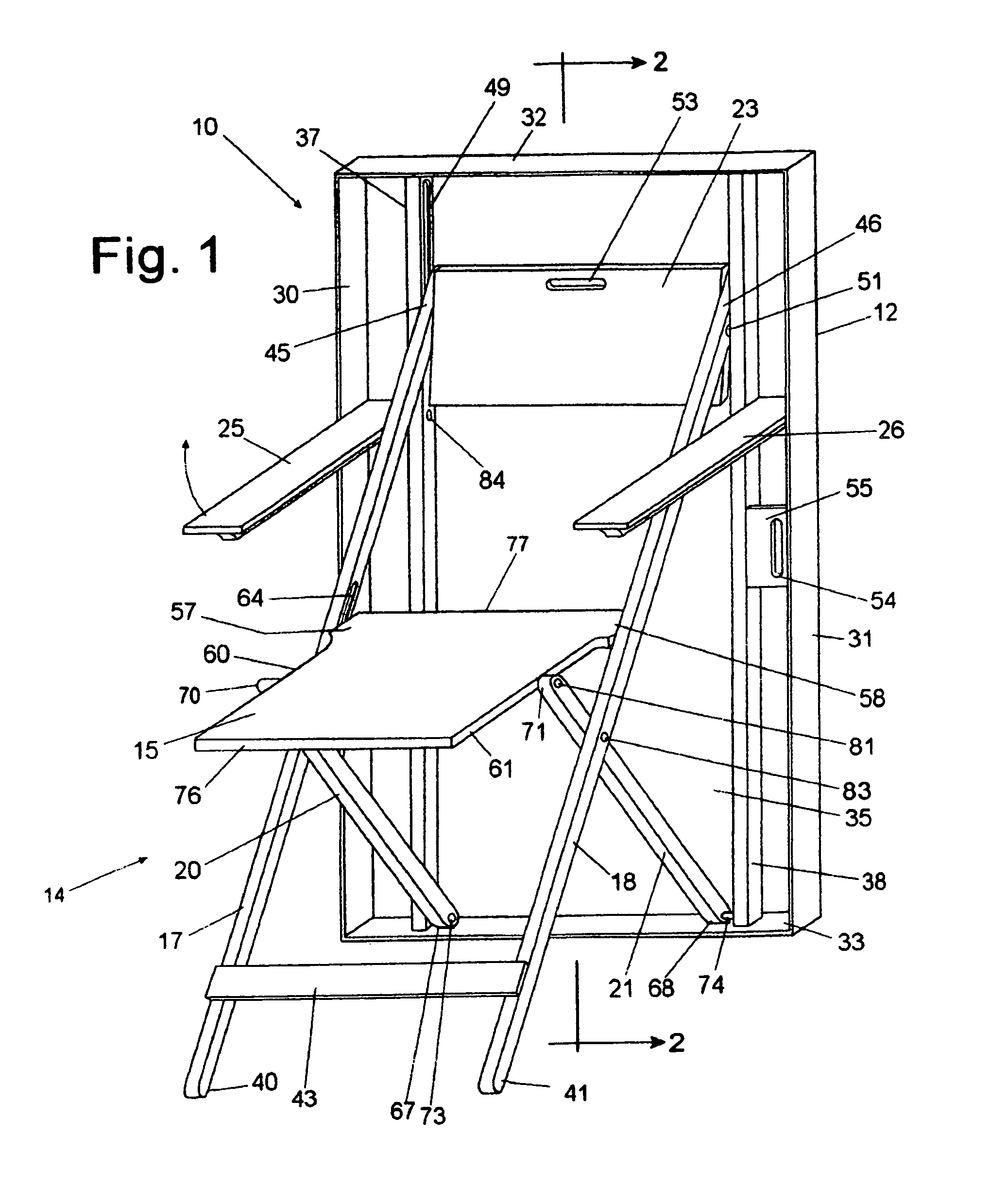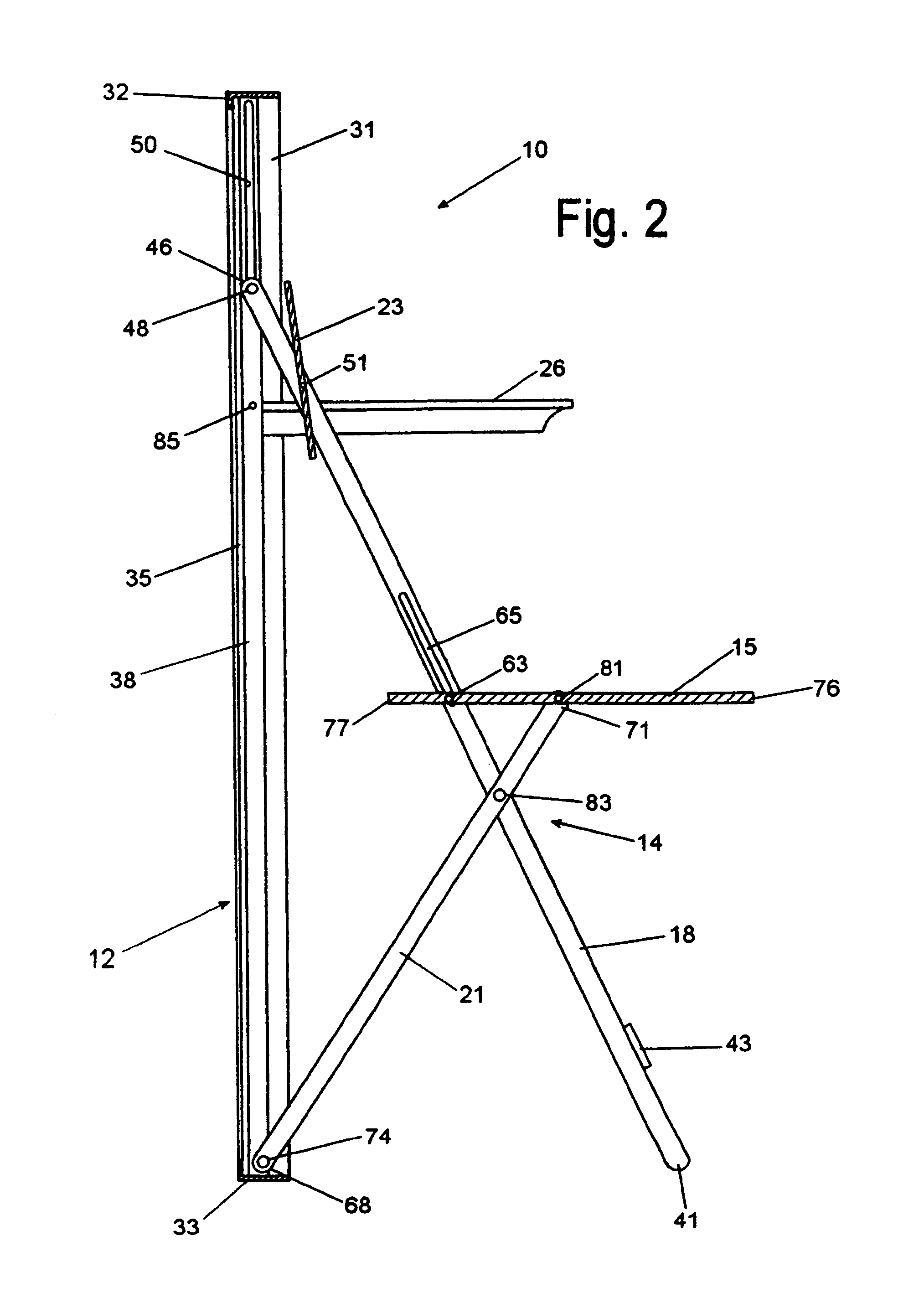Folding chair
a folding chair and folding technology, applied in the field of folding chairs, can solve the problems of not being durable or sturdy, unable to be completely folded flat to conserve, heavy to carry, difficult to fold and unfold, etc., and achieve the thinnest profile, easy to operate, and multifunctional
- Summary
- Abstract
- Description
- Claims
- Application Information
AI Technical Summary
Benefits of technology
Problems solved by technology
Method used
Image
Examples
second embodiment
[0049]the chair and frame assembly, generally designated 110, is shown in FIGS. 6 and 7 and is seen to generally comprise three basic components: a thin, rectangular frame, generally designated 112; a folding chair, generally designated 114, including a seat 115, a first pair of spaced apart, relatively long, front legs 117 and 118, a second pair of spaced apart, relatively short, rear legs 120 and 121, and a back 123; and, a pair of arm rests 125 and 126.
[0050]The rectangular frame 112 is seen to include opposed, spaced upright thin outer side walls 130 and 131, opposed, spaced thin top and bottom walls 132 and 133 extending between the corresponding upper and lower ends of the outer side walls 130 and 131, and a back panel 135. The L-shaped walls 130, 131, 132 and 133 and the back panel 135 mounted on the inwardly extending legs of the L-shaped walls define a relatively thin, rectangular box, or picture frame, with a shallow internal cavity and an open front. Spaced inwardly from ...
third embodiment
[0056]the chair and frame assembly, generally designated 210, is shown in FIGS. 8 and 9 and is seen to generally comprise three basic components: a thin, rectangular frame, generally designated 212; a folding chair, generally designated 214, including a seat 215, a first pair of spaced apart, relatively long, front legs 217 and 218, a second pair of spaced apart, relatively short, rear legs 220 and 221, and a back 223; and, a pair of arm rests 225 and 226.
[0057]The rectangular frame 212 is seen to include opposed, spaced upright thin outer side walls 230 and 231, opposed, spaced thin top and bottom walls 232 and 233 extending between the corresponding upper and lower ends of the outer side walls 230 and 231, and a back panel 235. The L-shaped walls 230, 231, 232 and 233 and the back panel 235 mounted on the inwardly extending legs of the L-shaped walls define a relatively thin, rectangular box, or picture frame, with a shallow internal cavity and an open front. Spaced inwardly from...
PUM
 Login to View More
Login to View More Abstract
Description
Claims
Application Information
 Login to View More
Login to View More - R&D
- Intellectual Property
- Life Sciences
- Materials
- Tech Scout
- Unparalleled Data Quality
- Higher Quality Content
- 60% Fewer Hallucinations
Browse by: Latest US Patents, China's latest patents, Technical Efficacy Thesaurus, Application Domain, Technology Topic, Popular Technical Reports.
© 2025 PatSnap. All rights reserved.Legal|Privacy policy|Modern Slavery Act Transparency Statement|Sitemap|About US| Contact US: help@patsnap.com



